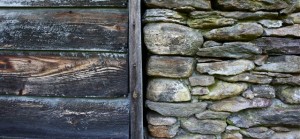
In political dialogue, the infinitive “to stonewall” means to delay or prevent something by putting up a serious barrier of some sort. Not so for those of us who appreciate the fine art of building a stone wall from scratch, given a supply of stones. Fortunately, there are a growing number of workshops that individuals can sign up for to learn the art, or practice, of dry stone masonry.
For most people, this is a ritual way of entering New England’s former stone age, generally spanning the 18th and 19th centuries. For me, it’s like playing outdoor chess. Indeed, some pieces are more valuable than others, strategy is important, and pawns are often sacrificed en route to victory. And all of this takes place aerobically outdoors.
Last week I was at the Eric Sloane Museum in Kent, Connecticut to spend a day in celebration of New England’s historic stone walls. This event overlapped with one such stone wall workshop, hosted by the “friends” group of the museum taught by Carl Dill. The previous week, I recall reading about one at Parmelee Farm in Killingworth, taught by Andrew Pighills and Dan Snow. And this week I learned of one being offered in Portsmouth, New Hampshire, sponsored by the Wentworth Gardner and Tobias Lear Historic Houses. With news of three such events reaching the Stone Wall Initiative in as many weeks, I decided to write a blog posting alerting readers about the phenomenon in general, and Portsmouth’s 2 day intensive hands-on masonry conservation class in particular. It will run on June 13 & 14. The contact person is Sandie Dika, who can be reached at 603-426-9282.